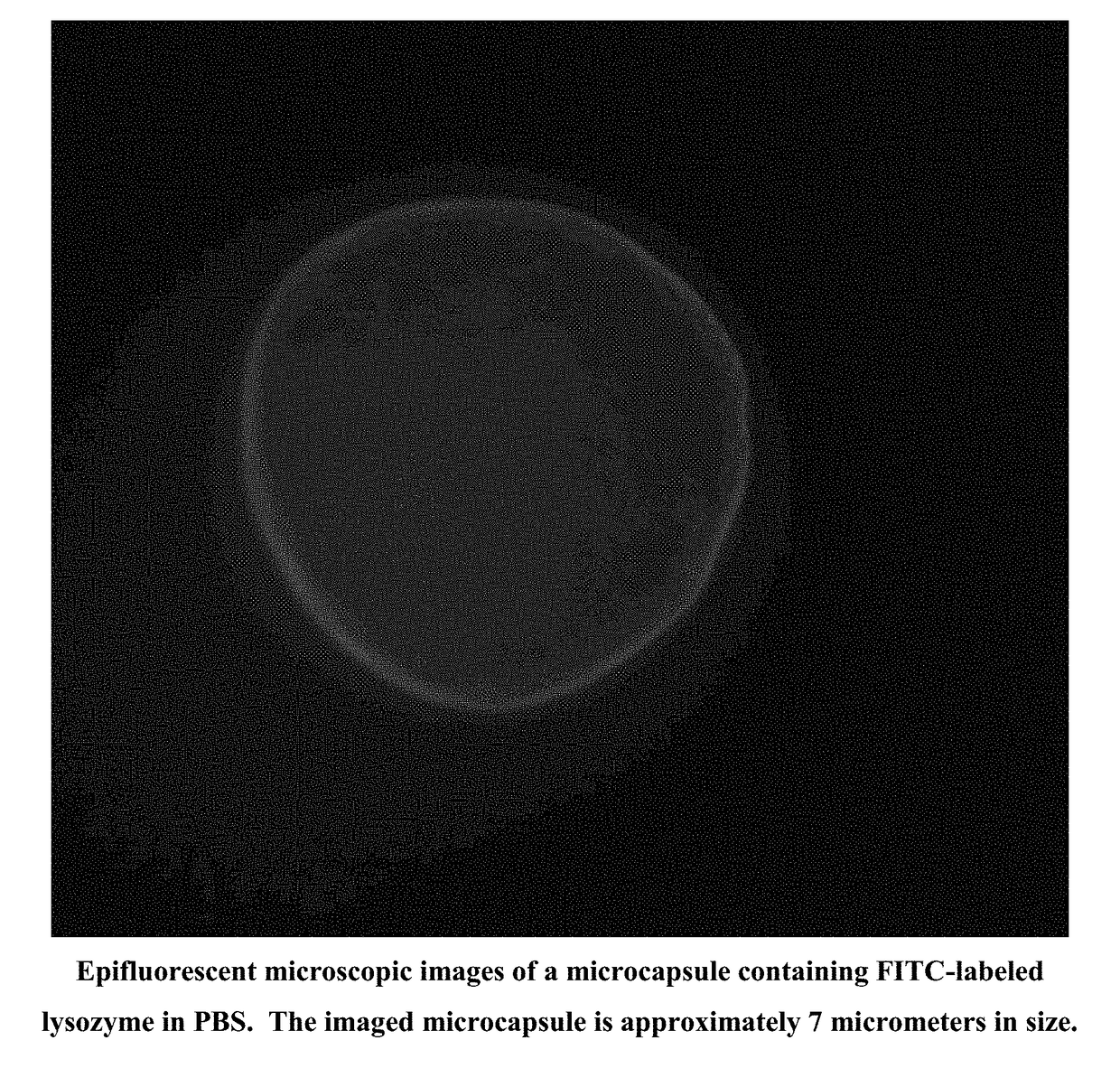Buffered microencapsulated compositions and methods
a technology of compositions and microencapsulated materials, applied in the field of buffered microencapsulated compositions and methods, can solve the problems of compromising bone health, hardness and strength, and no currently practiced therapeutic strategy involving methods or compositions, and achieve the effect of prolonging the release of cleaning agents
- Summary
- Abstract
- Description
- Claims
- Application Information
AI Technical Summary
Benefits of technology
Problems solved by technology
Method used
Image
Examples
example 1
[0223]A microcapsule composition of the invention was prepared containing a buffered solution of a peptide-based anitimicrobial agent. The composition was prepared by performing an interfacial polymerization in a stable inverse emulsion of phosphate buffer saline solution of a peptide-based antimicrobial agent in a methyl benzoate continuous phase. 6 grams of polyglyceryl-3-polyricinoleate (P3P) was used as the emulsifying agent. The emulsifying agent and 4 grams of a polyurethane polymer were mixed together. The aqueous buffer solution of the peptide-based antimicrobial agent (100 mL of 0.1 M) was added to 210 mL of continuous methyl benzoate oil phase under mixing. 0.2 g of ethylene glycol was subsequently added to the inverse emulsion to complete the interfacial polymerization of the polyurethane polymer at the interface of the dispersed buffered aqueous solution of peptide-based antimicrobial agent droplet. The average size of the microcapsule was controlled by the rate of mixin...
example 2
[0224]A microcapsule composition of the invention was prepared containing a buffered solution of a peptide-based anitimicrobial agent. The composition was prepared by performing an interfacial polymerization in a stable inverse emulsion of phosphate buffer saline solution in a methyl benzoate continuous phase. 6 grams of polyglyceryl-3-polyricinoleate (P3P) was used as the emulsifying agent. The emulsifying agent and 4 grams of a polyurethane polymer were mixed together and added to 210 mL of continuous methyl benzoate oil phase under mixing. 0.2 g of ethylene glycol was subsequently added to the inverse emulsion to complete the interfacial polymerization of the polyurethane polymer at the interface of the dispersed buffered aqueous solution of a peptide-based antimicrobial agent. The microcapsules containing buffer solution were stirred in a solution of a buffered peptide-based antimicrobial agent (100 mL of 0.1 M) while being mixed and heated to 37° C. to effectively load the micr...
example 3
[0225]A composition of the invention for cavity varnish with antimicrobial capabilities was prepared as follows. A standard cavity varnish containing rosin, ethanol and thymol (97 wt %) were combined with 3 wt % of a microcapsule containing a 0.1 M buffered aqueous solution of an antimicrobial agent.
PUM
| Property | Measurement | Unit |
|---|---|---|
| Molar mass | aaaaa | aaaaa |
| Molar mass | aaaaa | aaaaa |
| Molecular weight | aaaaa | aaaaa |
Abstract
Description
Claims
Application Information
 Login to View More
Login to View More - R&D
- Intellectual Property
- Life Sciences
- Materials
- Tech Scout
- Unparalleled Data Quality
- Higher Quality Content
- 60% Fewer Hallucinations
Browse by: Latest US Patents, China's latest patents, Technical Efficacy Thesaurus, Application Domain, Technology Topic, Popular Technical Reports.
© 2025 PatSnap. All rights reserved.Legal|Privacy policy|Modern Slavery Act Transparency Statement|Sitemap|About US| Contact US: help@patsnap.com



